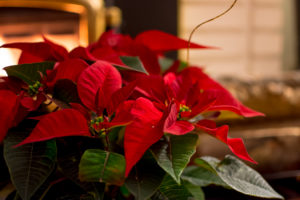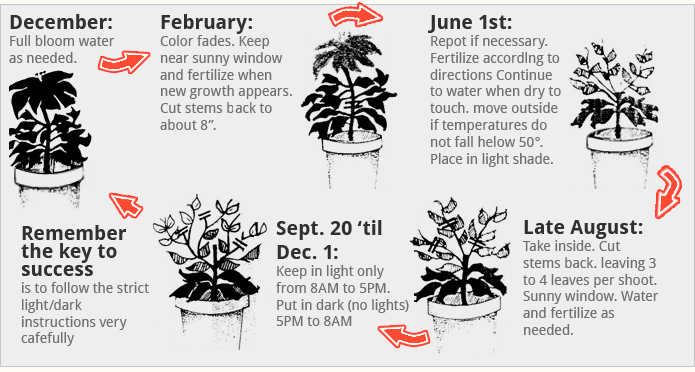
Poinsettia Care
Posted by Grange Co-op on 1st Dec 2019
Bring on the Poinsettia Season!
Spread some holiday cheer with the vibrant, mainstay of the Christmas season: the colorful poinsettia. Whether you’re decorating your home, office or place of business as the weather gets chillier, brighten up your indoor space with fragrant evergreens, candles and poinsettias.
Poinsettias are available in hundreds of varieties. Varieties such as red, pink, cream, white, raspberry, soft salmon and even multi-colored are available at your local Grange Co-op. Create a blaze of eye-popping colors that last well into the New Year.
This GrangeKnows article pinpoints a few basic guidelines to help you succeed with your poinsettia decorations.

Selecting Your Poinsettia
- Foliage should be dark green to soil. The flowering bracts and colored leaves should be evenly colored, without white or dark marks or tears.
- There should be no yellow or green on poinsettia bract leaves, nor any drooping or wilting foliage.
- There should be no soggy soil or water inside a poinsettia wrap.
- Poinsettias should be exposed to outside temps below 50°F for only a very short time on the way home.
- Avoid getting water, especially cold, on the colored bract leaves – this can create unattractive gray-to-black marks on the bract leaves.
Taking Care of your Poinsettia
With proper care your poinsettia will last through the holiday season, retaining its bracts well into the new year. Pay close attention to the following care tips to achieve a lasting look:
- Remove the bag or sleeve used to bring the plant home. But handle with extreme care. Flower bracts are tender and easily damaged.
- Poinsettias do best in direct light – 4 to 6 hours per day if possible.
- Display where there are no hot or cold drafts; near doors or heaters is not advised.
- Check the soil daily: water when the surface is DRY to the touch. Water with tepid, warmish water. No fertilizer required.
- Do not water in wrap or sleeve. Water at the sink, allowing plant to drip dry. Replace the plant in a saucer to protect your furniture and flooring in your display location.
- Though poinsettias come from the tropics, they prefer daytime temperatures of 60-70°F, and around 50-55°F at night. Poinsettia flower bracts last longer in somewhat milder temperatures than warm-to-hot.
Reflowering your Poinsettia
If you’re ambitious, we encourage you to reflower for next year. Follow the directions below and if done correctly and carefully, it is possible to have your poinsettia in flower by next Christmas.

Grange Co-op has a wide-selection of pots and planters. Shop our full selection in store or view many options online as well at shop.grangecoop.
Poinsettia History and Legend
- Poinsettias grow naturally in Mexico, Central and South America. From records found in botanical writings dating from the 17th century, its estimated poinsettias were first discovered by early Spanish explorers. Aztecs had many uses for the plant. They called it Cuetlaxochitl, and later Franciscan missionaries called it “la flor de Nochebuena”, or Christmas Eve flower.
- The legend of Pepita, a poor child whose gift of a bouquet of weedy flowers given to baby Jesus which burst into red blooms when she laid them in the church crèche, was part of the popularity and sentiment behind giving these flowers in Mexico and South American countries.
- The poinsettia was named for Joel Poinsett, 1st U.S. Ambassador to Mexico, who introduced them to the U.S. in 1825.
- The Paul Ecke ranch in California was responsible for most of the research that has resulted in the amazing diversity of the modern flower varieties. There are currently over 100 varieties of poinsettias.
For more information on poinsettia care, visit your local Grange Co-op to speak with one of our Grange Gardening Experts.
